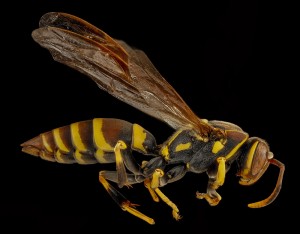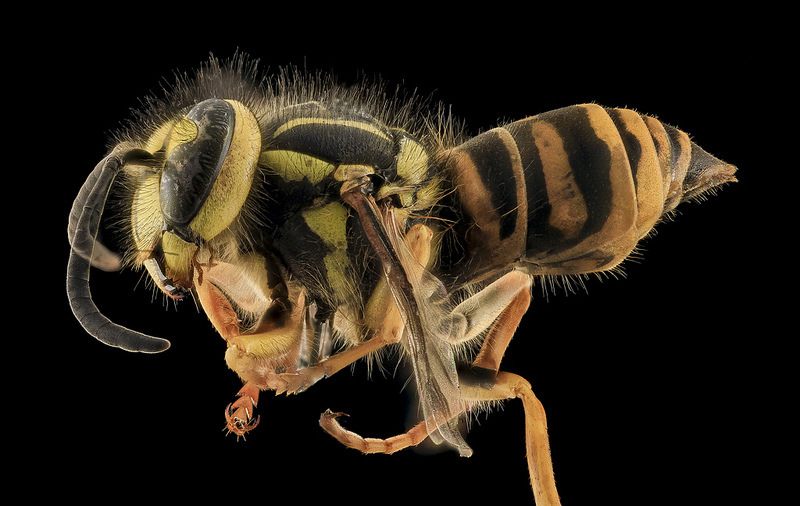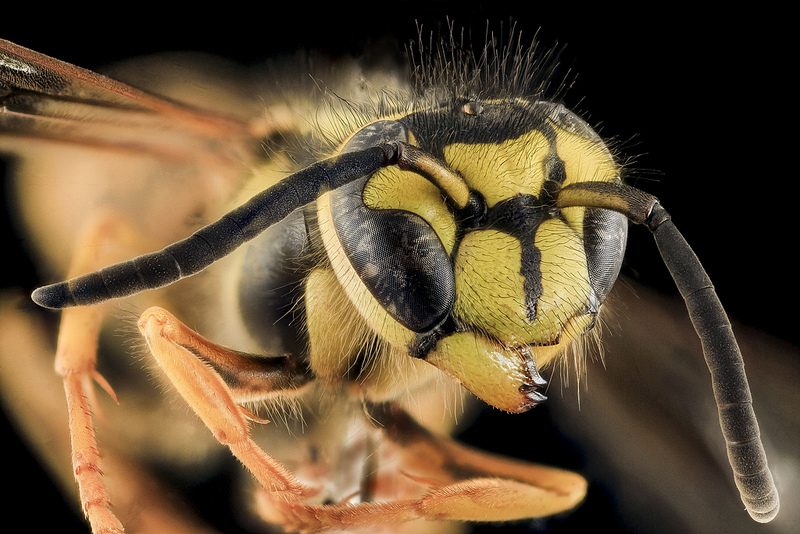NOT BEES
WASPS (Order Hymenoptera: Suborder Apocrita)
Wasps are similar to bees in appearance. In general, wasps have little hair, have bright colors, and a very narrow-waist (the junction between the thorax and abdomen). Most species have black and yellow color patterns. Unlike bees, wasp legs tend to hang down during flight. Wasps are much more aggressive than bees, and are more likely to sting a human.
Most wasps are not pollinators, and do not benefit agriculture, unless they are killing pest species. They tend to be parasitic creature; however, some are effective predators. Many species are social and form colonies, while other species are solitary and may not even make a nest.
There are over 100,000 species of wasps. Some of the most common wasps in Georgia include the yellow jackets, paper wasps, and hornets all who belong to the Family Vespidae. In the orchards, flower wasps (Family Tiphiidae) are very common.
Table 1. The following table provides a summary for the 2011 survey of wasps collected at four apple orchards. Many wasps were observed in the apple blossoms; many of these species provide limited “accidental” pollination services. The Tiphiid wasps (flower wasps) were particularly abundant during the apple bloom. The wasps were sampled once a month from March to October.
| WASP FAMILY | Orchard 1 | Orchard 2 | Orchard 3 | Orchard 4 | Total |
| CHALCIDAE | 0 | 1 | 1 | 0 | 2 |
| CHRYSIDIDAE | 1 | 2 | 2 | 1 | 6 |
| CRABRONIDAE | 8 | 4 | 24 | 10 | 46 |
| CYNIPIDAE | 0 | 0 | 2 | 0 | 2 |
| EUMENIDAE | 1 | 1 | 0 | 0 | 2 |
| MUTILLIDAE | 2 | 0 | 2 | 0 | 4 |
| POMPILIDAE | 1 | 4 | 2 | 2 | 9 |
| SCOLIIDAE | 0 | 1 | 12 | 1 | 14 |
| SPHECIDAE | 6 | 3 | 32 | 8 | 49 |
| TIPHIIDAE | 10 | 13 | 58 | 148 | 229 |
| VESPIDAE | 45 | 3 | 70 | 24 | 142 |
Photos taken by Sam Droege and staff at the USGS Bee Inventory and Monitoring Laboratory (Used with permission)



